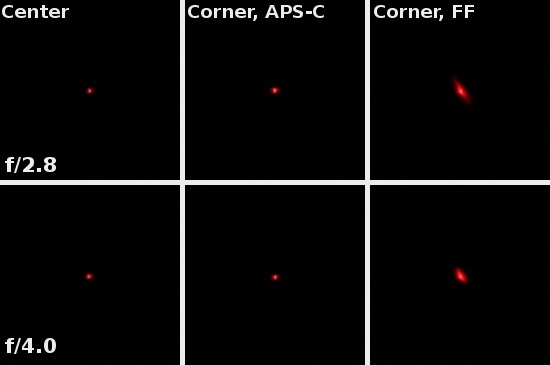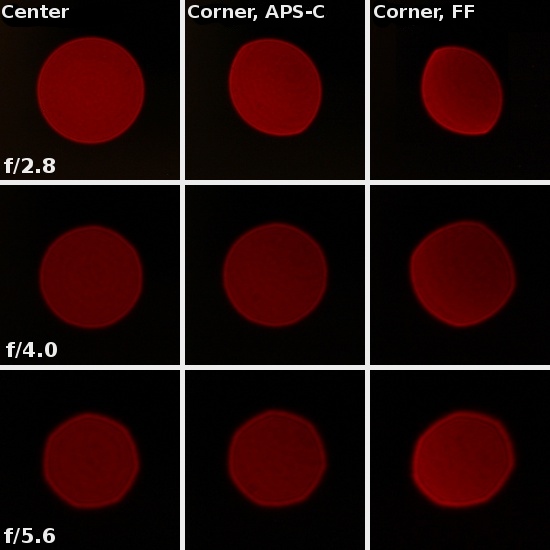Canon EF 28 mm f/2.8 IS USM
7. Coma, astigmatism and bokeh

We have no reservations whatsoever when it comes to the astigmatism correction degree. The average difference between horizontal and vertical MTF50 value amounted to only 2.6% and it is an excellent result.
Please Support UsIf you enjoy our reviews and articles, and you want us to continue our work please, support our website by donating through PayPal. The funds are going to be used for paying our editorial team, renting servers, and equipping our testing studio; only that way we will be able to continue providing you interesting content for free. |
- - - - - - - - - - - - - - - - - - - - - - - - - - - - - - - - - - - - - - - - - - - - - - - -
The images of defocused light points are very nice at the maximum relative aperture which might suggest that the blurred areas on photos will be equally pleasant. A ring near the edge of the circle appears on stopping down but, fortunately, its intensity is not high. Apart from that, after stopping down the aperture, the depth of field becomes so large that distinct blur areas, where you could admire nice bokeh, are difficult to find.







